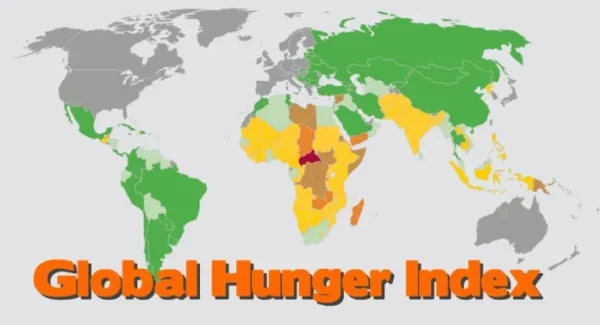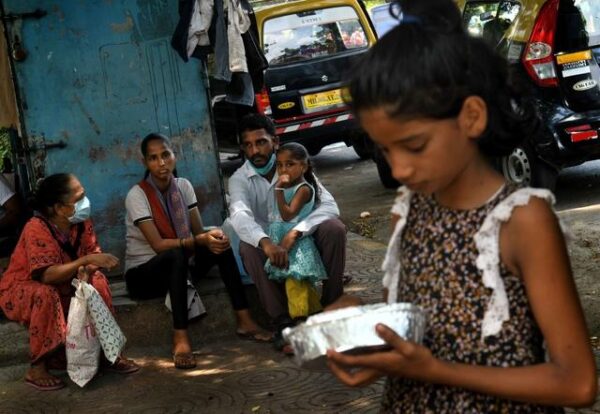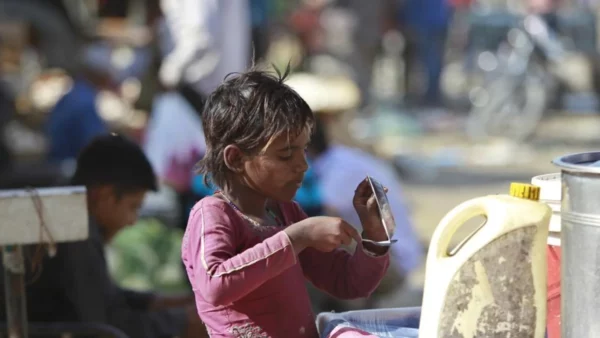India ranks 107th out of 121 countries on Global Hunger Index

India ranks 107th out of 121 countries on Global Hunger Index
On the Global Hunger Index, India is worse than any other South Asian nation, saving for war-torn Afghanistan at position 107 out of 121.
A technique for fully measuring and monitoring hunger at the international, regional, and national levels is the Global Hunger Index (GHI). Undernourishment, child stunting, child wasting, and child mortality are the four component indicators on which the Global Health Index (GHI) scores are based. The GHI score is determined using a 100-point scale, with zero representing the best result (no hunger) and 100 representing the worst.
India’s score of 29.1 places it in the ‘serious’ category.
India ranks below Sri Lanka (64), Nepal (81), Bangladesh (84), and Pakistan (99). Afghanistan is the only country in South Asia that performs worse than India on the index.
China is one of the nations with a score of less than five that are collectively ranked between 1 and 17.
India has the highest child wasting rate (low weight for height), at 19.3%, which is worse than the levels seen in 2014 (15.1%) and even 2000 (17.15%). Because of India’s enormous population, this rate raises the average for the region.
The prevalence of undernourishment, which is an indicator of the population’s proportion that experiences chronic dietary energy intake insufficiency, increased in the nation from 14.6% in 2018-2020 to 16.3% in 2019-2021. Out of the 828 million undernourished individuals worldwide, this corresponds to 224.3 million people who live in India.
The other two measures, child stunting and child mortality have improved in India. Between 2014 and 2022, child stunting decreased from 38.7% to 35.5%, while child death decreased from 4.6% to 3.3%. India has seen a small deterioration, as evidenced by its GHI score, which rose from 28.2 in 2014 to 29.1 in 2022. Despite being an annual report, the GHI’s ranks cannot be compared between years. Only the GHI scores from 2000, 2007 and 2014 can be compared to the 2022 score.
The fight against hunger has mostly stagnated on a global scale in recent years. The global GHI score in 2022 is rated as “moderate,” yet the difference between 19.1 in 2014 and 18.2 in 2022 is merely marginal. This is because of converging issues like war, climate change, COVID-19’s economic effects, and the Ukraine War, which has driven up the cost of food, gasoline, and fertiliser around the world and is predicted to “worsen hunger in 2023 and beyond.”
According to the research, there is “severe” or “alarming” hunger in 44 nations, and neither the globe as a whole nor about 46 countries are expected to achieve even low hunger as determined by the GHI by 2030.
In a response through email, Laura Reiner, Senior Policy Officer for the Global Hunger Index, explains why the GHI values cannot be compared to those from the previous year.
She writes, “Each set of GHI scores is based on data spanning five years. The data used to calculate the 2022 GHI scores are from 2017 through 2021; the data used to calculate the 2014 GHI scores are from 2012 through 2016; the data used to calculate the 2007 GHI scores are from 2005 through 2009; and the data used to calculate the 2000 GHI scores are from 1998 through 2002. In order to avoid overlapping years in the data used for the computations and demonstrate improvement through time, we choose prior reference years.”

Global Hunger Index
The European NGOs Concern Worldwide and Welthungerhilfe created the Global Hunger Index (GHI), a tool that monitors and records hunger on a global, regional, and national level. The GHI is calculated annually, and the results are published in a report that is released every October.
The COVID-19 pandemic, the climate disaster, and increasingly severe and protracted conflicts have all contributed to a dire famine scenario, according to the 2021 Global Hunger Index. The already plodding progress toward the SDG “Zero Hunger by 2030” has stalled or even reversed in several nations.
What is the Global Hunger Index?
Since 2000, the GHI has been released virtually yearly; this year’s report is the fifteenth. A lower score raises a nation’s ranking and suggests better performance.
To accomplish “Zero Hunger by 2030,” one of the Sustainable Development Goals outlined by the United Nations, it is necessary to map hunger. This is the rationale behind why GHI scores are not computed for some high-income nations.
In technical terms, hunger is quantified by mapping the calorie intake level, although it is defined in terms of food deprivation in common usage.
However, the GHI does not confine itself to this specific interpretation of hunger. Instead, it monitors how well various nations perform on four important metrics because, when combined, they capture several aspects of hunger, including the lack of micronutrients, and so offer a much more thorough measurement of it.

How is hunger measured?
The GHI looks at four main indicators:
* Undernourishment (which reflects inadequate food availability): calculated by the share of the population that is undernourished (that is, whose caloric intake is insufficient);
* Child Wasting (which reflects acute undernutrition): calculated by the share of children under the age of five who are wasted (that is, those who have low weight for their height);
* Child Stunting (which reflects chronic undernutrition): calculated by the share of children under the age of five who are stunted (that is, those who have low height for their age);
* Child Mortality (which reflects both inadequate nutrition and an unhealthy environment): calculated by the mortality rate of children under the age of five (in part, a reflection of the fatal mix of inadequate nutrition.
Data from each nation are standardised on a scale of 100 points, and a final score is determined by allocating 33.33% of the weight to components 1 and 4 and 16.66% of the weight to components 2 and 3.
Countries with hunger scores of 9.9 or less go into the “low” category, while those with scores of 20 to 34.9 fall into the “severe” group and those with scores of over 50 fall into the “very worrying” category.

What is India’s score relative to those of the others?
India came in last with a score of 29.1, placing it in the “severe” category for hunger, trailing its neighbours Bangladesh (84), Nepal (81), Pakistan (99), and Sri Lanka (64). Over time, India has seen a decline in GHI scores. It had an “alarming” score of 38.8 in 2000, which fell to 28.2 by 2014. Since then, the nation has begun to post greater scores.
India has typically recorded lower values for the four metrics, but in 2014, the rates of undernourishment and child wasting began to rise. Undernourishment increased from 14.8 per cent in 2014 to 16.3 per cent in 2022, while the prevalence of waste in children under five years of age increased from 15.1 per cent in 2014 to 19.3 per cent in 2022.




